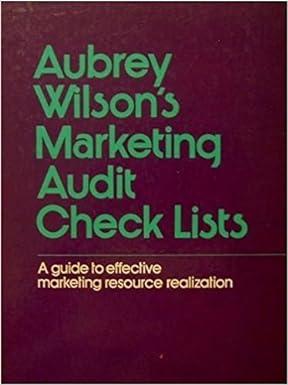Question
I need the answer to the question I did not answer?? You enrolled 6,500 men in 2005 and followed them for 10 years. Liver cancer
I need the answer to the question I did not answer??
You enrolled 6,500 men in 2005 and followed them for 10 years. Liver cancer is your outcome; none of the men had liver cancer at the start of the study. Of those men who drank alcohol daily (n=2,000) starting in 1990, 50 were diagnosed with liver cancer during the 10-year period. Of those who abstained from alcohol in 2005, 50 had liver cancer diagnosed during the 10-year period. Nobody died or was lost to follow up during the study period.
- What is the research question in this study?
Are drink alcohol more likely to get liver cancer than who did not drink alcohol.
- What type of study design is this, and how can you tell? Be specific.
Think this is a cohort study design because the observation taken over period of time.
- Complete the standard epidemiology table. Include the numbers and the proper headings.
| 2x2 table | Liver Cancer | No liver Cancer | Total |
| Drink Alcohol | 50 | 1950 | 2000 |
| Did not drink | 50 | 4450 | 4500 |
| Total | 100 | 6400 | 6500 |
- Calculate the relative risk. Show formulas and work.
Rate drink alcohol = 50/2000=0.025
Rate did not drink alcohol =50/4500=0.011
Relative risk = 0.025/0.011= 2.273
- The p-value on your RR is p =0.03. Is your RR statistically significant? Explain how do you know?
RR 2.273 and P 0.03 P value is quite small and its true, so we do reject the null hypothesis and thus the association is significant.
- Explain the meaning of the RR finding in a sentence.
A danger proportion (RR), additionally called relative danger, looks at the danger of a wellbeing occasion (illness, injury, hazard factor, or demise) among one gathering with the danger among another gathering.
- You conducted additional studies with these men and found that the RR for those who drank one drink per day was 1.50 (95% CI:1.32-1.67) in comparison to the abstainers. For those men who drank three or more drinks per day the RR compared to the abstainers was 4.20 (95% CI 2.68-5.85). Which one of Hills criteria does this illustrate? Explain.
- You also conducted a review of the research literature and found that similar studies examining the relationship between alcohol consumption and liver cancer found the following:
Smithson et al. RR 3.3 (95% CI:1.95-5.20)
Ribera et al. RR 2.1 (95% CI:1.17-3.33)
Gonzalez et al. RR 2.75 (95% CI 2.26-3.45)
Which one of Hills criteria does this illustrate? Explain.
- Excluding those from #7 and #8, name 2 other criteria from Hills list that we have already established? Explain.
- Researchers are starting to feel pretty confident that daily alcohol consumption is CAUSALLY linked with liver cancer. What do you think is the one other Hills criterion that researchers would like to have that would make them feel even more strongly about causality in this relationship?
Review from Module 2: Find the incidence rate per 100,000 of liver cancer for each group for #11-13. Show formula/work.
- Daily drinkers:
- Abstainers:
- Total study group:
- Find the prevalence of drinking daily in this group of study participants. Show formula/work.
- Since liver cancer is a relatively rare disease, we could have selected 100 patients with liver cancer to be in a study instead of doing the study that took 10 years described above. Which study design would this be, and how do you know?
- Who else would we need to participate in the study described in #15, and what characteristics should they have?
- What are some of the typical confounders that would apply for either study? How and when would you plan to handle these?
- What types of bias do you think might occur with either study design?
- Liver cancer has multiple causes other than alcohol consumption, such a hepatis B, hepatitis C, non-alcoholic fatty liver disease, obesity, and diabetes. These would also potentially confound the association. Explain the meaning/definition/criteria of confounding using one of these as an example and alcohol consumption and liver cancer as the exposure and disease, respectively.
- Bonus: Look at #7. We can tell from the information provided that there are probably more people in the one drink a day group than the 3+ drinks per day. How can we tell?
Step by Step Solution
There are 3 Steps involved in it
Step: 1

Get Instant Access to Expert-Tailored Solutions
See step-by-step solutions with expert insights and AI powered tools for academic success
Step: 2

Step: 3

Ace Your Homework with AI
Get the answers you need in no time with our AI-driven, step-by-step assistance
Get Started


